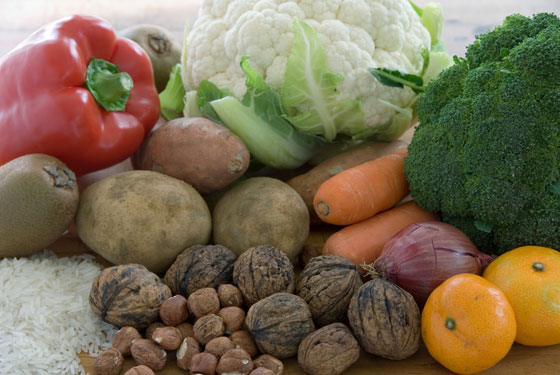
The statistics are horrifying, while millions in the world starve, here in the Western world it is estimated that 30-40% of all food produced is thrown out.
Not only are our wallets being damaged but the energy impact on the planet to both make and break down this food is significant.
Below is a list of tips and hints that we think are worth considering, the list is by no means complete so please do share your ideas with us as well.
There is an assumption that people have freezer space but if not you do have to work much harder to use as you go.
1. Only buy what you think you are able to eat.
2. Freeze bread in manageable e.g. several slices per plastic bag, that way you can thaw as you need without breaking any other slices.
3. Freeze left over mashed pumpkin, kumara or carrot and parsnip, these can be added to soups or stews at a later date.
4. Peel and freeze over ripe bananas, these are great for smoothies or baking.
5. After washing fresh celery chop into 3-4 cm chunks and place in a sealable plastic bag. Refrigerate in the vegetable tray of your fridge and use as needed.
6. Ripe avocado can be pureed with lemon juice or citric acid (1 tablespoon lemon juice per avocado) and then frozen in a sealed container or bag. Once thawed it can be used for guacomole or as a sandwich spread.
7. Have a stock bag in the freezer for off cuts of onion, carrot, celery, parsley etc… Add to stock as needed.
8. Freeze left over chicken bones/carcasses (cooked or raw) and use for making chicken stock when you have sufficient.
9. Asparagus ends can be frozen and then used to make asparagus soup.
10. Turn left over bread into breadcrumbs and add parsley to it a the same time. These herb crumbs can then be frozen and mixed into burger or meatball mixture as needed.
11. Bunches of spring onions can actually be planted (as a loose bunch), you can then pull out a stem as you need it.
12. Special lettuces with roots attached will continue to grow, harvest the leaves and then plant the rest and you will (should) grow another lettuce.
13. Store asparagus by placing them spear pointing upwards in a glass with a few centimetres of water in the bottom. Sit this in your refrigerator and change the water every other day.
14. Celery can be frozen, it will be soft when thawed but this is fine for stocks and smoothies.
15.Freeze left over coconut cream/milk in ice cube trays.
16. Left over egg yolks can be frozen, mix in a little salt or sugar (label accordingly) as this prevents the yolks from becoming gelatinous.
17. Egg whites can be frozen for up to 12 months.
18. If bakery bread goes stale simply wrap it in a wet tea towel and then warm through in a hot oven. The bread will be as if freshly baked.
19. Quarter lemons and limes and freeze, drop into drinks for chill and flavour.
20 Practice FIFO – first in first out, therefore you won’t find any limp vegetables at the back of the vegetable drawer.
21. Have a plan for eating leftovers, either as lunch the next day or converted into a different meal.
22. Eat as much of the vegetable as you can, broccoli and cauliflower stems are delicious sauteed etc…
23. Understand that expiry dates are a conservative best before, look and sniff before making a decison on whether the food needs to be thrown out or not.
24. Keep highly perishable food at eye lever in the fridge, that way you are more likely to be reminded that it needs to be used.
25. Freeze parmesan cheese rinds and then add to soups at a later date.
26. Have an eat from within meal once a week. This is when you eat from your fridge, freezer and pantry.
27. Wash herbs and then store in the fridge wrapped in a damp paper towel within a plastic bag.
28. Break up lettuces before storing, wash and dry leaves and then store in a lettuce crisper or sealed plastic bag.
29. Only cook as much food as you think you can manage in one meal or have a plan for the leftovers.
30. Top and tail carrots and then store in a sealed plastic bag, they will stay crisp for weeks.
31.If in a restaurant decline items that you know you won’t use e.g. bread roll or a jug of milk for tea/coffee if you don’t need it.
32. Make garlic bread out of day old bakery bread and then wrap in foil and freeze until needed.
33. In areas where pantry moths are an issue then keep an eye on stored dried products. Sealed plastic containers are best but you may need to set moth traps as well and rotate food regularly.
34. Grow your own herbs so you can cut off what you need as you need it.
35. Have a worm farm, compost bin or Hungry Bin – that way any left over vegetable and fruit scraps can be broken down in an environmentally friendly way.
36. Compost bins and gardens are great places for tea or coffee dregs and also tea bags.
37. Store root ginger in a sealable bag in the freezer, grate from frozen as needed.
38. Make croutons or crostini with left over bread sticks.
39. Shop from bulk bins for items that you are purchasing for a specific recipe and only buy what you need.
40.Freeze excess milk or butter.
What are your best tips for avoiding food waste?





Egg shells are a great source of calcium in the garden, they deter snails too. Citrus peels in the garden deter cats. Also don’t be fooled by multi-buy specials at the supermarket unless you know you will eat them.
I freeze leftover rice into dinner size portions; thaw and heat.
Keep wholemeal flour in the freezer to avoid moth problems.